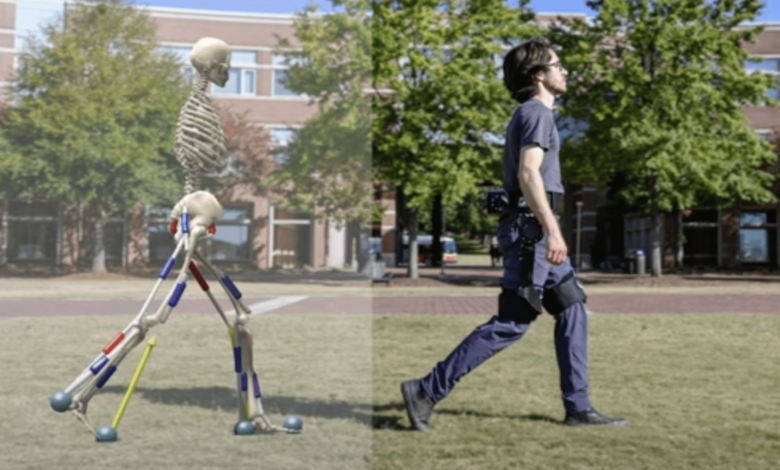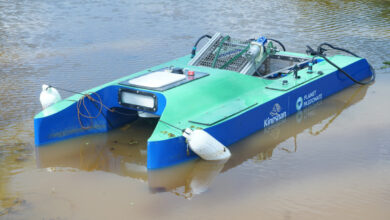AI improves human locomotion in robotic exoskeletons, saves 25% energy

A new method developed by researchers uses AI and computer simulations to train robotic exoskeletons to autonomously help users save energy.
Researchers from North Carolina State University, in their new study, showed the technologically advanced instrument as an achievement in reinforcement learning, a technique that trains software to make decisions.
In a demonstration video, provided as part of their new research published in Nature, the method consists of taping into three neural networks: motion imitation, muscle coordination, and exoskeleton control networks.
A test subject started walking, running, and climbing stairs demonstrating a fluid transition between these three sets of movements. And it only takes eight hours for the machine to adapt to the body.
While running, the device intelligently sensed what support the body needed.
With the added factor that it reduced energy expenditure by 24.3% while walking, 13.1% while running, and 15.4% while climbing stairs, the device might attract able-bodies seeking to enhance their performance and training.
“This work is essentially making science fiction reality – allowing people to burn less energy while conducting a variety of tasks,” Su said.
A leap for machine learning technology
A device for able-bodied and mobility-impaired individuals alike, it doesn’t have to pass through a lab or clinical setting, perhaps because it’s simply a most intelligent technology dependent on the individual wearing it.
Shuzhen Luo, first author of the paper, stated to NC State that “previous achievements have tended to focus primarily on simulation and board games.”
But this solution that combines AI and computer simulations lays a foundation for the future of wearable robots. They just got smarter, in other words, and they’re ready for use immediately.
Another frontier in machine learning has been cracked open.
NC State researchers said that the exoskeleton straight out of science fiction is in the early stages of its development for older adults and people with neurological conditions such as cerebral palsy or belonging to the amputee populations.
Hopefully, it will be ready for use for those demographics soon as they need better support. And though their needs might require adjustments to the actual design, the potential for this machine learning technology is indeed exciting for injured individuals as well as able-bodies seeking to optimize their health.
“Experiment-free Exoskeleton Assistance Via Learning in Simulation” has just been published in the journal Nature.
ABOUT THE EDITOR
Maria Mocerino Originally from LA, Maria Mocerino has been published in Business Insider, The Irish Examiner, The Rogue Mag, Chacruna Institute for Psychedelic Plant Medicines, and now Interesting Engineering.



